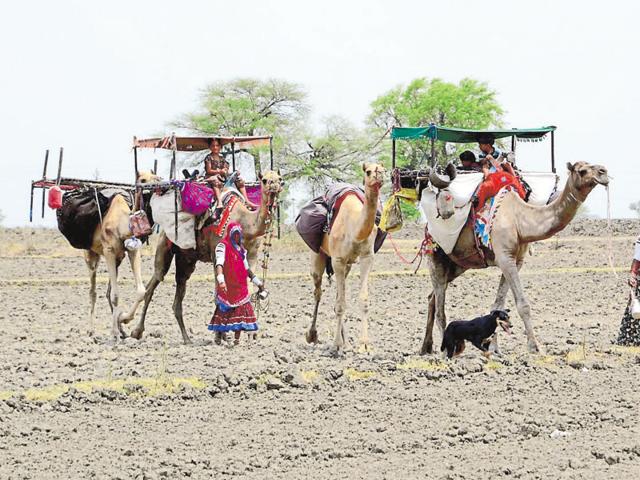Smuggling, low breeding threaten camel population
There have been 43 cases of camel smuggling, when the animal has been illegally sent to slaughter houses outside the state
In spite of being the state animal of Rajasthan, for the last two decades its camel population has been consistently on the decline with rampant smuggling for the purpose of slaughter being the latest menace to hit the ‘ship of the desert.’

According to data available with the Rajasthan police, it has been seen that in the last two years, there have been 43 cases of camel smuggling, when the animal has been illegally sent to slaughter houses outside the state.
The data reveals that this phenomenon is most rampant in Churu and Hanumangarh, two districts bordering Haryana.
“We have seen an increase in cases of camel smuggling in recent times. Given the fact that Churu is located right outside Haryana border, it serves as the final transportation point for the smugglers. So far all the people whom we have arrested are from Uttar Pradesh,” said Bharat Rahul Manhardan, superintendent of police, Churu.
He added that generally the smugglers prefer to transport the animals in trucks at the dead of the night.
“The animals are put in lots of 15-20 inside the trucks in such a way that they barely have any place to move. We have also noticed that the people who are engaged in this business of smuggling often acquire the animals from cattle fairs,” said Manhardan.
In March 2015, the Rajasthan government passed the The Rajasthan Camel (Prohibition of Slaughter and Regulation of Temporary Migration or Export) Bill, 2015 which made camel slaughter and smuggling illegal in the state.
In spite of the law, camel smuggling is thriving in the state, courtesy the rise in demand for camel meat.
In June this year, animal rights activists in Hyderabad rescued 87 camels including 10 calves which were smuggled from Rajasthan for the purpose of slaughter. The animals were made to walk all the distance and many of them were sick and grievously wounded at the time they were rescued.
“It is shocking that, the camel population in Rajasthan has drastically gone down and it’s a failure on the part of central and state governments to implement the laws. Government of Rajasthan, apart from enforcing the laws that apply to transport, slaughter and use of camels for entertainment within the state, must also actively urge other States and Union Territories to implement these laws in order to protect the camels from abuse and from extinction,” said Dr. Manilal Valliyate, director of Veterinary Affairs, People for the Ethical Treatment of Animals (PETA).
He added that people who want to conserve the camels and do not want to support animal suffering, must make the decision to stop eating them and wearing their skins, and refuse to take camel rides.
Camel population rapidly decreasing in Rajasthan
NV Patil, director of National Research Centre on Camel, Bikaner said that according to the latest census of camels done in Rajasthan, there has been a 23 per cent deduction in the state animal’s population.
“One of the primary reasons behind this is that camel breeding is slowly falling out of favour with the Raika tribesmen, the traditional camel breeders in the state. The younger generation of various camel rearing communities such as the Raika and Rabari are not interested in this tradition and are going outside state to earn their livelihood,” said Patil.
He added that camel breeding falling out of facour in Rajasthan is paving way for crimes such as smuggling of camels for slaughter purpose.
Last month, the state animal husbandry department launched a new scheme to promote camel farming in the state as part of its larger plan to conserve the state animal. Under the scheme, Rs. 10,000 will be given to a camel farmer at the time of birth of every calf. Several other initiatives to commercialize the sale of camel milk have also been launched by the state.
“Unfortunately, initiatives such as regularizing the use of camel milk, which is extremely rich in protein, are not being able to take off because of a number of reasons. The Raikas believe in old superstitions, under which they are forbidden to sell camel milk. We are trying to hold awareness campaigns with them in order to promote camel farming,” said Patil.
From 7.46 lakh camels in 1992, according to the last camel census done in 2012, there are now only 3.25 lakh camels left in Rajasthan.
“We have very little time to waste and immediate measures need to be taken to control of this rapid decline in Rajasthan’s camel population,” said Patil.
The camel census will once again be conducted in next year and experts believe that the figures will substantially decrease than that of 3.25 lakh, which was in 2012.





